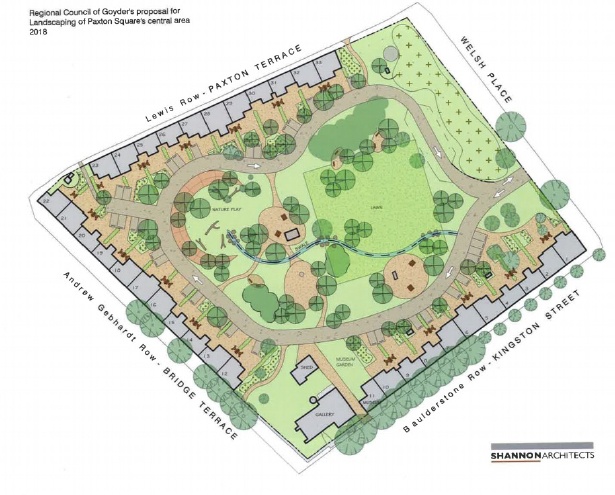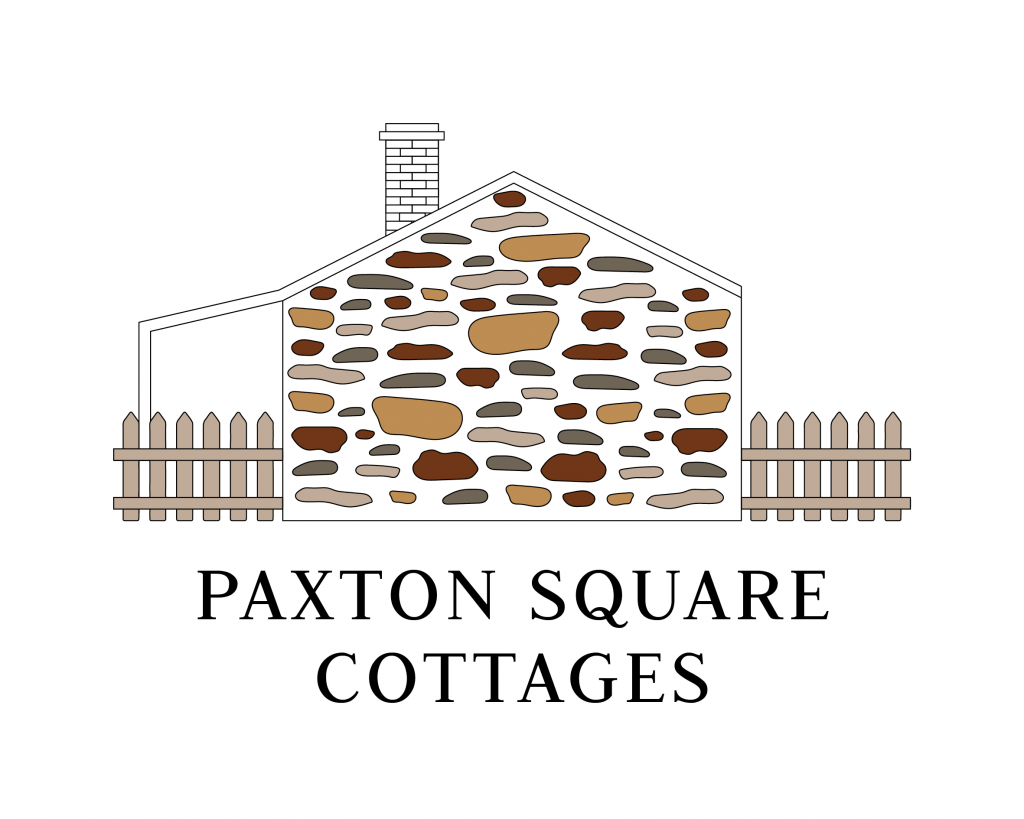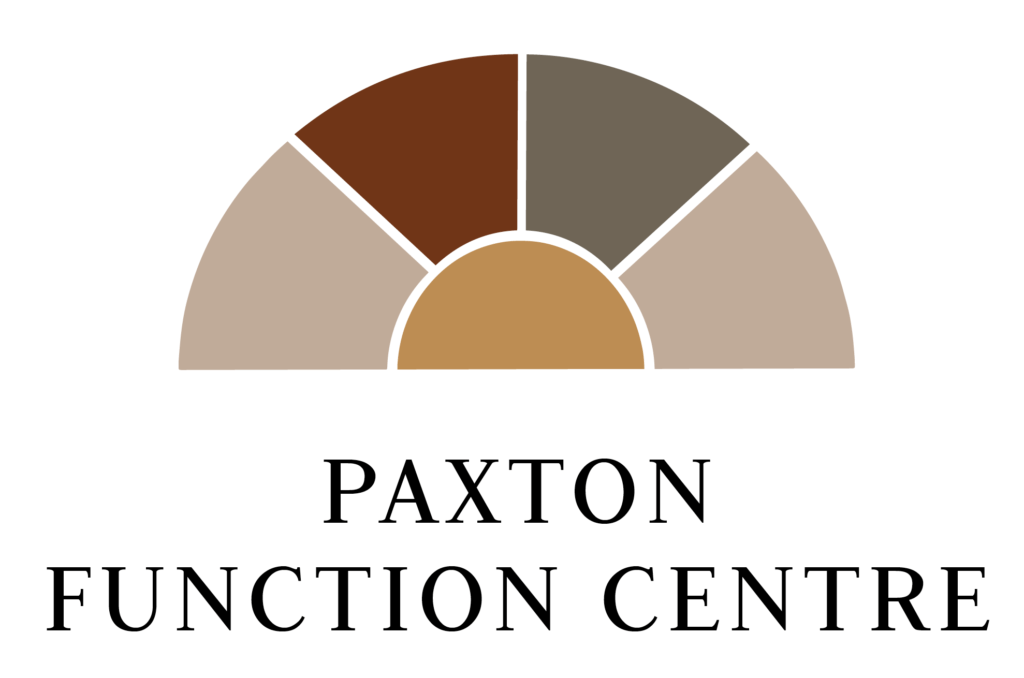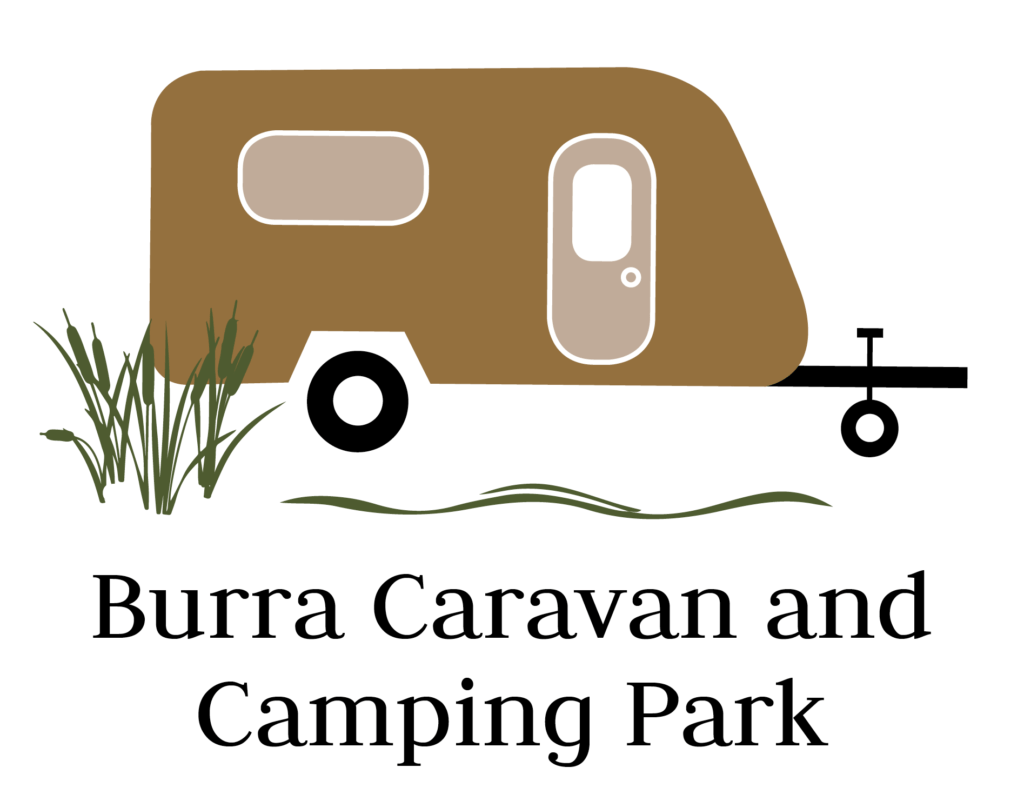Paxton Square Cottages History
Content and images sourced from the Paxton Square Cottages publication, written by Eric Fuss & Meredith Satchell. Approval kindly provided to replicate.
Kingston Street in the 1930s.
William Paxton
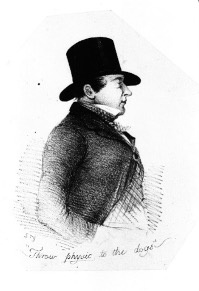
Paxton Square is named after William Paxton, one of the founders of the South Australian Mining Association in April 1845.
When the Association set out later that year to buy half the Special Survey that was to be developed as the Burra Burra Mine, Paxton purchased 28 of the £5 shares. This proved to be a good investment when the shares returned 100% interest for many years, 400% for several and 800% in one year. In the company town of Kooringa he then built and leased out four hotels (the Burra Burra, now demolished), The Miners’ Arms (now The Burra), The Pig & Whistle (demolished after a fire in 1883) and The Smelters’ Arms (now a private residence) and the rows of cottages known as Paxton Square.
Paxton also invested in real estate in Adelaide, buying land at Lockleys and Semaphore South. He also acquired land at Gawler, which he subsequently subdivided as Willaston. He also purchased Town Acre 142 on Grenfell Street in Adelaide. From 1852-54 he took part in local government in Adelaide and in 1851 was invited by the residents of Burra to nominate for a seat in the new Legislative Assembly, but he declined. He did unsuccessfully contest the seat of Port Adelaide in 1853. In 1852 he was one of the founders of the short-lived Adelaide Morning Chronicle, which folded in March 1853. He also owned race horses.
Background to Burra housing in the 1840s.
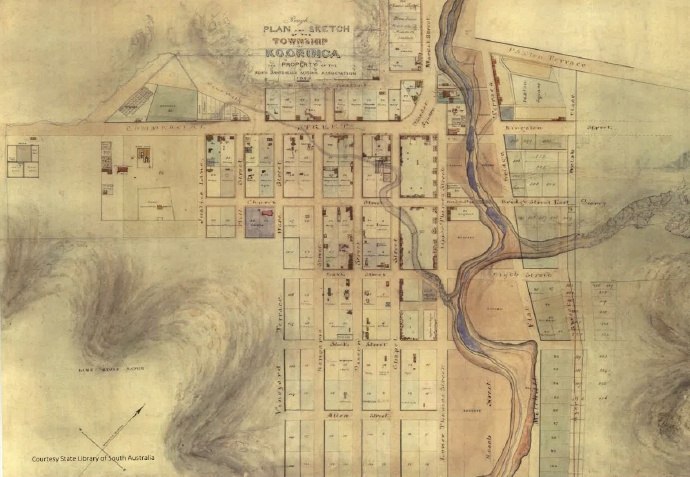
Mining for copper began at Burra in September 1845. Almost immediately it became apparent that this would be a rich mine and as a consequence miners flocked to the site. The mining company began to lay out their private town adjacent to the mine in early 1846 and gave it the local Aboriginal name of Kooringa. Since it was located entirely on the mining company’s property, sites could only be leased and freehold title did not become available until 1869. The miners were uncertain of the life expectancy of the mine and disliked leasehold, where improvements benefited the mining company and as a result many simply dug homes for themselves in the soft clay banks of the Burra Creek. The 1850 census returns showed that Kooringa and the settlements of Aberdeen and Redruth on the northern boundary of the mine property had a total population of 4,146, living in 327 stone houses, 121 wooden ones and an estimated 600 dugout houses, which accommodated some 1,800 people.
The mining company had by then erected many cottages for rent to their employees and among these tiny two or three roomed dwellings were predominant. As early as 1848 floods in the creek highlighted the dangers of the dugouts and the company encouraged people to leave their underground homes. Among the company’s dwellings were the Paxton Square rows. Erection of these may have begun as early as 1848, as they appear on the 1849 plan of Kooringa in the upper right hand corner of the page opposite. They are also shown in an S.T. Gill painting of 1850 and one by W.A. Cawthorne from the same year, where the latter intriguingly shows an eastern row of cottages, of which no trace now remains. Burra’s first historian, Frank Treloar also mentions this eastern row, saying in a newspaper article ‘Looking Back’ (Burra Record, 1929) that the Paxton Square cottages were erected later. This eastern group of dwellings does not appear in an 1872 photograph of the town. After three serious floods in 1851 the mining company refused to employ anyone living in a dugout. Miners relocated to the town or to the settlements on the fringes of the mine property. The dugouts would seem to have been abandoned by the end of the 1850s.
The 1849 plan shows eleven cottages on the western side of the square—apparently disposed as four two-roomed, six three-roomed and one four-roomed. The south side row at the time is shown as two three-roomed and a two-roomed cottage. The northern row must have come later and Cawthorne’s supposed eastern row is absent and has not been traced elsewhere at any period.
The company charged 3 shillings a week rent from the average weekly earnings of 25 shillings.
Site and construction of Paxton Square
The site of the square lies on the eastern side of the Burra Creek with an area of about one hectare. The builder, William Henderson built the western row in 1848-49 for William Paxton, a Director of the South Australian Mining Association. The architect of the rows of two, three and four-roomed cottages was George Strickland Kingston, another Director of the South Australian Mining Association. He gave his name to Kingston Street, on the south side of the square.
‘All the cottages are similarly constructed of solid random rubble walls and simple double pitched raftered roofs. The original roof sheeting of split timber shingles is evident beneath the later (1873) sheeting of corrugated iron.
Ceilings were originally of whitewashed hessian and later changed to lath and plaster in most rooms.
Floors appear to be of compacted earth originally, but have largely been surfaced with timber boarding or brickwork laid directly over the original earth floor.
While many cottages have been subject to various minor internal adaptations over the years, most are remarkably intact.’
(Ex Paxton Square Cottages Feasibility Study, Lester, Firth & Murton Pty. Ltd. 1979.)
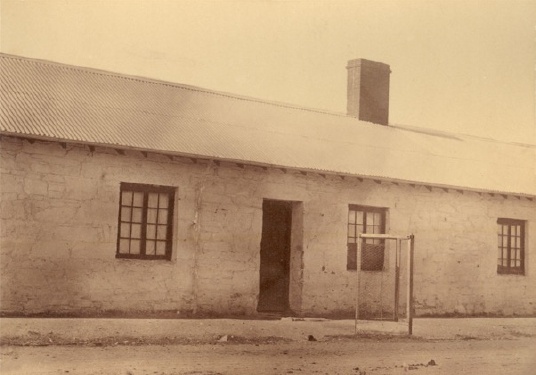

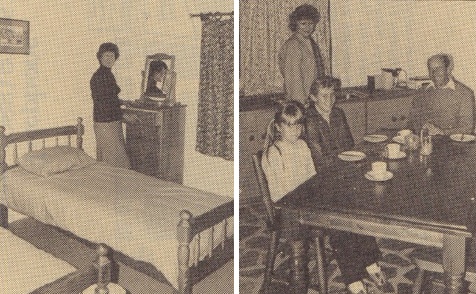
Hon. John Lewis MLC
In 1913 the Hon. John Lewis MLC, who had lived in Burra from 1876 to 1906 as manager of the stock and station firm of Liston, Shakes and Lewis, purchased the cottages from the SA Mining Association for £500. In 1914 Lewis stated his philanthropic purpose was ‘to present Paxton Square to the town for the use of indigent and deserving people’ – adding the proviso—’who did not get drunk’. He also hoped that the Burra Town Council would become the nominal owners, offering a further £500 to cover immediate repairs, to sweeten the deal.
Despite the apparent generosity of the deal, the Council responded rather slowly. Lewis was under the impression, following meetings with the Council’s representatives, that all had been agreed to, but in April 1915 the Council said nothing had been ratified by Council and they were of the opinion that rents would not cover future costs and the Council would be saddled with a costly responsibility. Ultimately they refused the offer and in 1916 it was even proposed to demolish the cottages in favour of a recreational reserve on the site. Eventually in March 1923 Paxton square was incorporated by Act of Parliament into a Trust to be administered by a Board of Management. John Lewis died 25 August 1923 and was buried at Burra, after the body was brought from Adelaide by special train.
The Lewis Trust included one nominee to represent the donor or his heirs and the ministers of religion of the town decided the suitability of the tenants. No profits were to be made, with all income used for renovation.
In the 1930s the cottages were fully occupied as might be expected during the Great Depression. At this time rents were one shilling per room per week for indigent families and two shillings per room per week for employed families. Few improvements were made, but in December 1939 the town council approved the erection of verandahs and about the same time galvanised iron lean-tos were constructed at the rear of each cottage and small rain-water tanks were installed. The water supply was extended to provided a tap in each backyard.
Restoration of the Cottages
In 2016 a $1.2 million project was begun to repurpose the Square to turn it into a 3.5 star-rated facility. This required completed refurnishing and upgrading of kitchen and bathroom facilities, air conditioning in place of open fires and modern televisions throughout. It was aimed at supporting Burra’s ambition to be the home of the boutique festival. The Bible Christian Chapel would become a communal meeting place for guests. The upgrading of the interiors of the facility was accomplished in 2017. Exterior work and landscaping of the central space was an ongoing project.
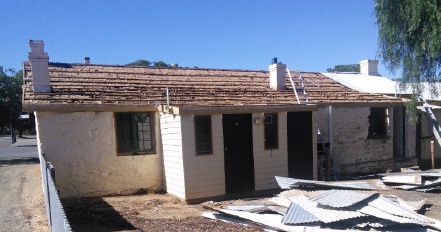
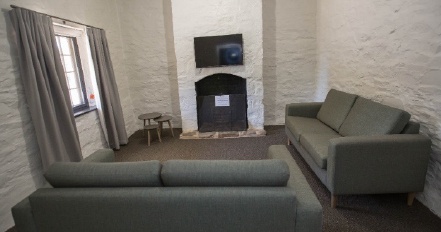
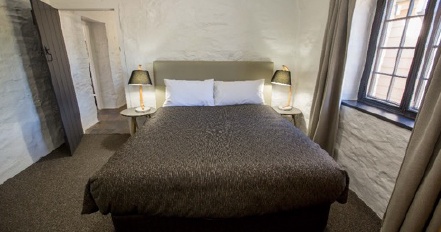
2017 refurbishment of the cottages.
New roofing and the introduction of air conditioning, the flat screen television and a notice on the fireplace indicating it is no longer operational.
